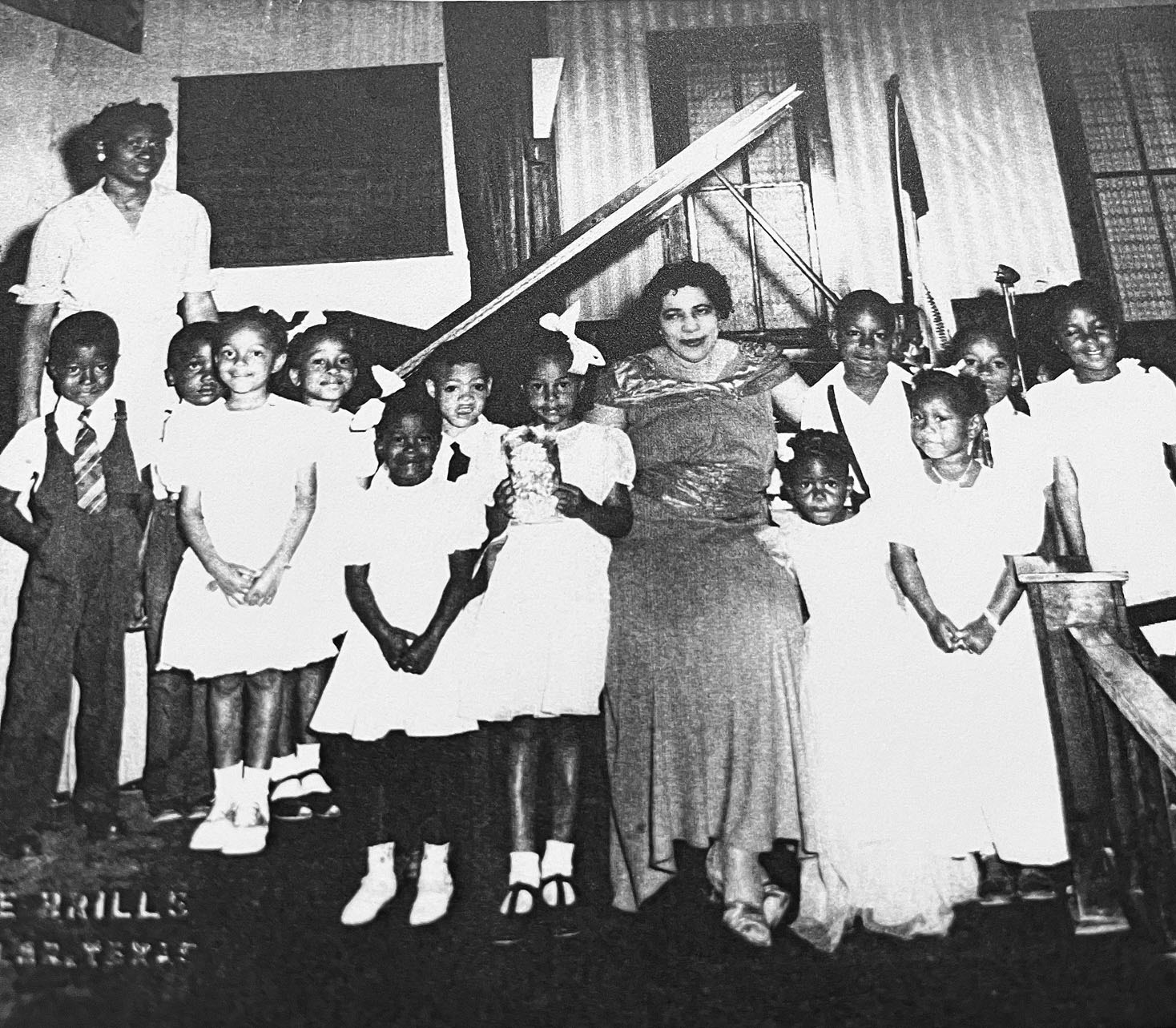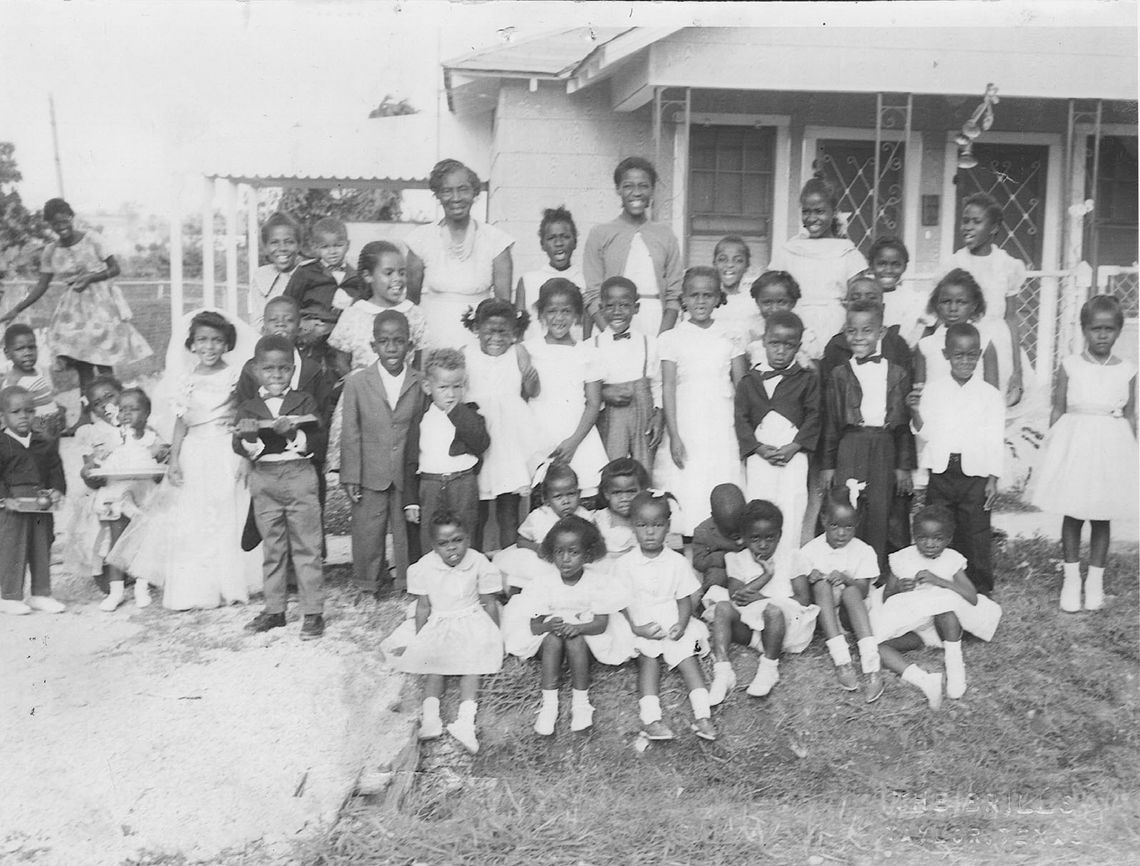Honoring Our African American Community
Edna ‘Mama’ Harris provided a home-based kindergarten to young African American children during segregation
During the days of racial segregation, Blackshear Elementary School offered no kindergarten program, but African American 5-and 6-year-olds in Taylor still had a rich learning environment at the home of a woman everyone called “Mama Harris.”
“She was a Christian and a lover of children,” said Leslie Hill, 81, who attended Harris’s homebased kindergarten during the late 1940s. “We learned from an early age how to get out, how to talk before the public, and how to use our utensils. … And then she taught us our ABCs. We knew how to spell our names when we got to school in the first grade. We could count, and we knew the Lord’s Prayer.”

Edna Mabel Harris was born in 1900 to Oscar and Julia Anderson in Carmine.
At a time when few African Americans had opportunities for higher education, Harris was able to earn a Bachelor of Arts degree from Bishop College, a historically Black college in Marshall, which has since closed.
After she and her family moved to Taylor, they joined The First Baptist Church of Taylor where Harris remained active until her death in 1973. During the mid-1930s, Harris became the first vice president of the Welfare Workers Club, a health and civicminded organization for African American women, under the late Magnolia P. Dickey, wife of noted physician James L. Dickey.
Key achievements of the club included procuring three public hydrants for impoverished community members who could not afford to pay $1.30 for water during the Great Depression and helping the Dickey Family launch a vaccination campaign against typhoid, according to reports.
However, the first major focus of WWC was to provide a nurturing early childhood educational space for African American children in Taylor and surrounding communities,
Hill said. “That was the first project the Welfare Workers Club went after,” she said. “There were parents that wanted to work and needed somewhere to work, but they had nowhere to leave their kids. So with the help from the federal government, and a little change she got from the parents, we called it the kindergarten because she taught us.”
Participants in Harris’s program, which ran out of her home on Burkett Street, said she made sure her students felt comfortable speaking in front of audiences — big or small.
“At the end of the school year, we always had a little program, and I can remember walking out on this stage in the community center by the old cemetery where there is a stage and a walkway,” Hill said. “We would give people our names, how old we were and our birthday.”
Great-great grandson Clarence Wooldridge, 65, said he even had the opportunity to be on a popular 1960s children’s television show after he unwittingly embellished one of Harris’s art projects.
“She had given us an assignment where we were to draw a bell,” Wooldridge said. “So we all draw bells, and I don’t remember where it came from, but I drew a crack in the bell, and when she saw this, she thought this was the greatest thing in the world, apparently.”
Wooldridge said at his age, which was 5 or 6, he was not yet aware of the iconic Liberty Bell in Philadelphia, which is famed for its crack, but through Harris’s extensive connections, he was able to show his drawing on “The Carolyn Jackson Show” with Jay “Uncle Jay” Hidgson.
Jackson and Hidgson were two prominent figures in Austin children’s television at the time.
The former also graduated from Taylor High School in 1944.
“I ended up being on the ‘Carolyn Jackson Show’ with my poster of my Liberty Bell,” Wooldrige said. “All I remember is them talking to me with cameras blaring on me. That was quite an experience back when we were that age and at that time especially.”
Hill and Wooldrige also remember being packed up in Harris’s car with more than a dozen other kids to go on outings, including to a restaurant, with frequent stops for visits with people all over Taylor.
“She was pretty well known,” Wooldridge said. “She would take us, and she would put us all in the car. I don’t remember how many kids it was. We were very little, and she would stop at so many different places just to say hello to people. She would also take forever to get done dropping kids off to get back to her house.”
Harris’s home-based program ended in 1965, when she was hired to launch what became the “Harris-Ross Head Start” program in Taylor, said Hill, who sat on the board that oversaw the local administration of the federal early childhood initiative.
Hill, who was instrumental in bringing Head Start to this city, also insisted that the program be named in honor of her first teacher. “Mama Harris did so much for us in Taylor,” Hill said. “So why not?”






